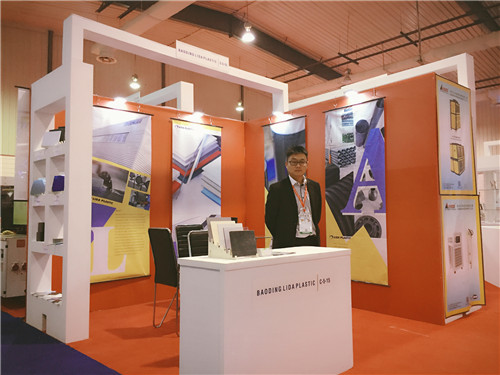नवम्बर . 06, 2024 09:39 Back to list
HDPE Pipe Fittings Applications and Benefits for Reliable Water and Gas Transportation Systems
Understanding HDPE Pipe Fittings Applications, Benefits, and Installations
High-Density Polyethylene (HDPE) pipe fittings have become a cornerstone in various industries due to their outstanding durability, flexibility, and resistance to corrosion. As we delve into the world of HDPE pipes and fittings, we discover the multitude of applications they serve, their inherent benefits, and proper installation techniques.
Applications of HDPE Pipe Fittings
HDPE pipe fittings are utilized across various sectors, including water supply, wastewater management, agriculture, and industrial applications. Their versatility enables them to be used in systems for transporting potable water, sewage, oil, and chemicals. Additionally, they play a vital role in irrigation systems, helping farmers manage water resources more efficiently.
In municipal infrastructure, HDPE fittings support the laying of water mains and sewer lines, where they connect pipes of different diameters and facilitate smooth transitions. In industrial settings, HDPE fittings are employed in chemical processing plants due to their resistance to various chemical substances, ensuring safe transportation of materials.
Moreover, the lightweight nature of HDPE fittings simplifies transport and installation, reducing the overall labor and equipment costs associated with heavy traditional materials.
Benefits of HDPE Pipe Fittings
One of the primary advantages of HDPE pipe fittings is their remarkable resistance to corrosion. Unlike metal or concrete, HDPE does not rust or corrode, significantly extending the lifespan of the pipes. This attribute substantially reduces maintenance costs and increases reliability over time.
Another critical feature is the ability of HDPE to withstand extreme environmental conditions, such as temperature fluctuations and UV exposure. This quality makes HDPE fittings ideal for outdoor applications and areas with harsh weather patterns.
HDPE fittings also exhibit excellent flexibility, which allows them to be installed in diverse environments. The material’s ability to bend without breaking is particularly advantageous in situations where ground movement or seismic activity is a concern. Moreover, HDPE’s smooth interior walls reduce friction and enhance flow rates, making them a preferred choice for transporting fluids.
hdpe pipe fittings

Furthermore, the installation process for HDPE fittings is relatively straightforward. They can be joined through various methods, including butt fusion, electrofusion, and mechanical fittings, allowing for a customizable approach based on specific project requirements.
Installation Techniques
Proper installation of HDPE pipe fittings is crucial to ensure the longevity and effectiveness of the entire system. Before beginning the installation, it is essential to review project specifications and comply with local regulations. Here are some key steps in the installation process
1. Preparation Ensure the trench for the pipes is clear of debris and appropriately graded. The depth and width of the trench should allow enough space for the fittings to be installed without stress.
2. Cutting and Joining When cutting HDPE pipes, use a specific cutter designed for plastic to achieve a clean, square cut. For joining, one of the most common methods is butt fusion. This process involves heating the ends of two pipes and then pressing them together, creating a seamless joint.
3. Quality Control Inspect joints and fittings for any defects or irregularities. It’s vital to ensure there are no gaps or misalignments that could lead to leaks in the future.
4. Backfilling After the HDPE fittings are installed and tested for leaks, backfill the trench carefully to ensure the integrity of the pipe system. Avoid using heavy machinery directly over the newly installed pipes to prevent damage.
5. Testing Conduct a pressure test to confirm the system's integrity. This step is crucial to identifying any potential leaks or weaknesses before the system is put into operation.
Conclusion
In summary, HDPE pipe fittings offer a robust, reliable, and versatile solution for numerous piping applications across varying industries. Their unique features such as corrosion resistance, flexibility, and ease of installation make them a standout choice for modern infrastructure projects. As industries continue to evolve, the adoption of HDPE piping systems is likely to grow, driven by the need for sustainable and efficient solutions in water management and beyond. Understanding the advantages and proper installation techniques of HDPE pipe fittings can greatly enhance project outcomes and operational efficiency.
-
PP Panels Durable PVC & CPVC Panel Solutions for Modern Walls
NewsMay.19,2025
-
Efficient PVC Pipe Drip Irrigation Systems - Save Water & Costs
NewsMay.18,2025
-
HDPE Irrigation Pipe Fittings Durable, Corrosion-Resistant Solutions
NewsMay.18,2025
-
Plastic Welding Rods for PVC, HDPE & Industrial Repairs Strong Bonds
NewsMay.18,2025
-
Premium PP Flute Sheets Lightweight, Durable & Transparent Options
NewsMay.17,2025
-
PVC Pipe to Drip Irrigation Kits Durable & Cost-Effective Solutions
NewsMay.17,2025

